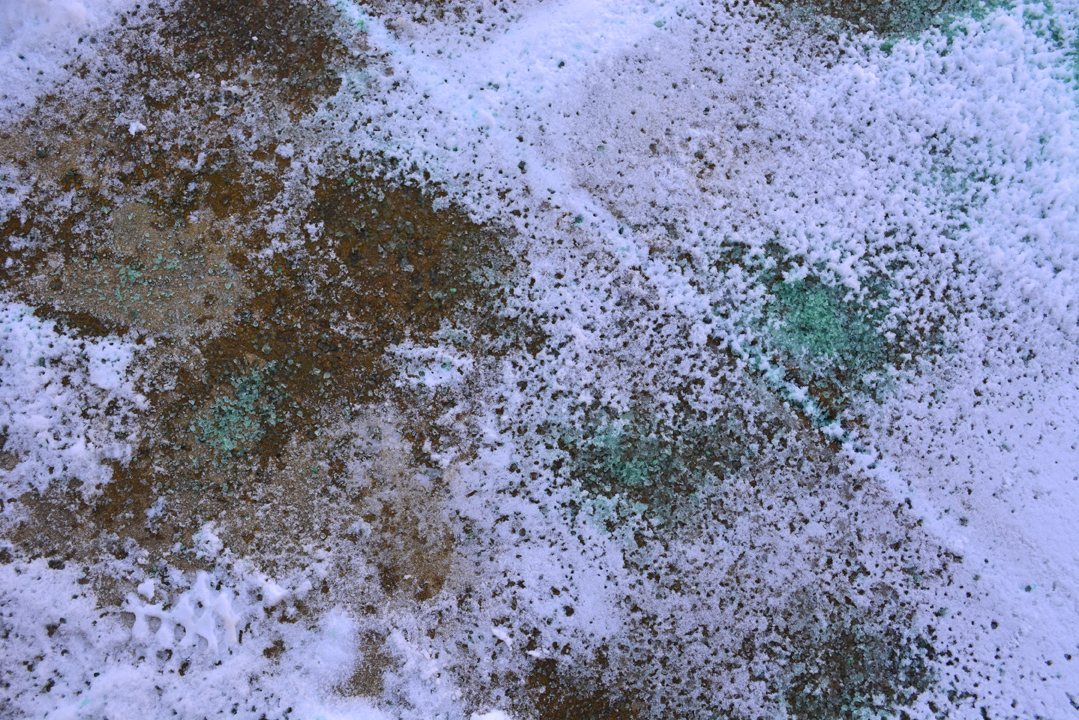Ice Melt Versus Rock Salt in the Garden

Cold and blustery weather up north brings out the rock salt in many homes, but rock salt melt can be hazardous to your gardens health – in the spring you will notice plant burnout around the sidewalks and driveways. What is ice melt versus rock salt?
ROCK SALT – Rock salt is sodium chloride and is effective to 5°F or -15°C. Because sodium chloride reduces the freezing point of water creating a brine which helps prevent ice from freezing hard against the hard surface of a sidewalk or driveway. Effectiveness is based on quantity – a lot of rock salt is needed in a small area. The problem with rock salt is that it is damaging to plants around the area where the salt is distributed and is also very irritating to pets paws.
ICE MELT – Ice melt is typically a mix of Calcium Chloride, Sodium Chloride, Potassium Chloride, and Magnesium Chloride. Calcium Chloride is effective to -15°F or -26°C. Beneficially, it is a product that melts ice a bit faster and can be used without damaging surrounding garden area. It can only be used on cured cement – not new cement. You can use less Ice Melt product than you would rock salt. While it is safer overall for the garden, if you have pets this still might not be the preferred choice for a pet safe sidewalk as chloride of any kind can irritate paws.
PET SAFE ICE MELT – There are several organic and pet safe ice melts which have absolutely no salt content, being made primarily from a glycol based crystalline amide core these are typically effective to 10°F or -12°C. Search for that ingredient over chlorides or urea. My personal concern about ice melts that are labeled with dog pictures on the front is that sometimes they are still not safe. I’m not suggesting that all pet safe labels are incorrect, merely that you should read the ingredient list very carefully. Ingredients such as Carbonyl Diamide or Carbamide Resin means the product is a Urea based melt and urea does absolutely nothing to melt ice and can also damage surrounding plants in the garden in high volume, so be cautious.
GRIT AND SAND – These items melt nothing, but it is completely environmentally friendly for pets and garden. Adding a layer of grit or sand on top of an icy sidewalk can help make the area less slippery.
~~~~~~
Ice Melt Product Review – My household has no pets, so I tried the Natural Alternative® Ice Melt on our sidewalk and driveway for two winter months. It worked well. Following the instructions, it said to apply a couple pounds per 500 feet and I applied far less than that and it worked very effectively. This helped to make my front sidewalk safer — I have had to be much more cautious of falls in winter since I was diagnosed with osteoarthritis and feel I need some sort of safe melt to keep my sidewalk from getting too icy. From an ice melt versus rock salt perspective, this ice melt worked well for my family and our safety needs this winter.





I stopped using rock salt a long time ago for the reason you mentioned. Of course here in NJ we don’t get nearly the winters that you get in Chicago, but I found that rocks salt of our sidewalk and driveway is really unnecessary.
Agreed. We try to get away with nothing at all, but when it gets really cold fall prevention is definitely needed. 🙂
I am a sand and grit person. Like you said, it won’t melt it, but gives me some traction. I don’t go out when it is too bad anyway. Shared on FB.
Salt and other forms of ice melt pose another risk to the paws of your pets. Some of these salts and mixtures that include calcium or sodium chloride can be harsh and corrosive to paw pads and toes.